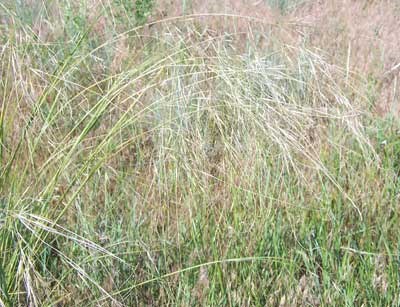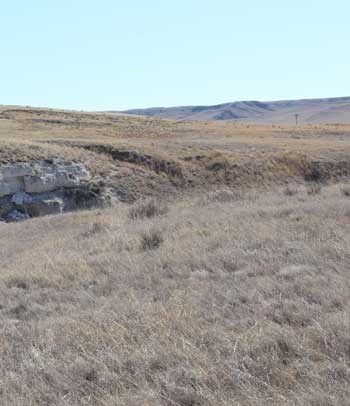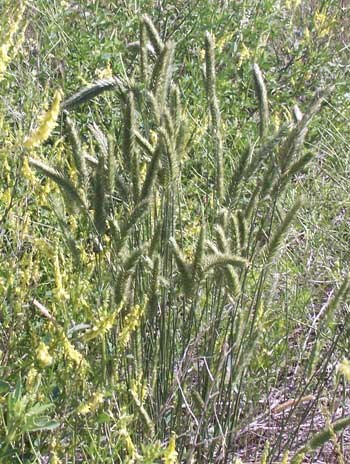
The leaves of grasses are specialized to cope with the arid environments they inhabit. As wind blows across plant leaves, it takes valuable moisture from the plant. Grasses have vertical leaves to minimize this loss while maximizing surface area for photosynthesis. Another adaptation grasses have made due to environment is their rooting system. Roots are extensive, which allows the plants to absorb moisture from different layers of the ground and to limit competition. Based on rooting types, grasses can be divided into two groups, bunch grasses and sod forming grasses. 
Sod is created by grasses growing close together with an abundance of small roots and shoots that reproduce into new plants. These shoots are called rhizomes when below ground and stolons when above ground. Extensive roots serve two purposes, to anchor the plant against the wind and to block out competition from other species. Sod forming grasses are usually dominant in the wetter years and in wetter areas. Bunch grasses tend to thrive in drier years and drier areas due to their spacing. Bunch grasses grow in scattered clumps with more space in between plants to limit competition for soil nutrients and water. Sod houses were built by early homesteaders in this area as shelters due to the lack of trees and other building materials. Sod is the upper stratum of soil held together by grass roots. It was cut out of the ground into long brick-shaped sections and piled to construct homes. 
Cheat grass or downy brome grass is a sod forming grass that was introduced from Europe in the 1800s and often takes over areas disturbed by grazing and fire. Cheat grass is present in a few disturbed sites of earlier homesteaders. Crested wheat grass is an introduced bunch grass from Russia but is found in scattered locations throughout the park. The threadleaf sedge, a grass-like species that is not a true grass is prominent at Agate and serves as part of the prairie grassland system. |
Last updated: April 10, 2015
